6 technologies that will revolutionise the aviation and airport industry in 2017
Posted: 20 February 2017 | Houman Goudarzi (IATA) | 5 comments
As we enter 2017, the future seems at once both exciting and worrying. As the technology sector moves forward faster than other industries can keep up, issues such as cyber security become more and more challenging at a faster and faster rate. To look into which technologies will come to affect most the aviation industry in 2017, we hear an excellent insight from IATA‘s Houman Goudarzi.
Here are his top 6:
1. Blockchain Technology
Blockchain technology

Some promising cases studies in the aviation space are related to:
Join us live: Shaping the Next Generation of Hold Baggage and Air Cargo Screening
Join us live for an insightful webinar on 11th December at 14:00 GMT, in collaboration with Smiths Detection, as we explore the strategic balance of operational efficiency, regulatory compliance, and sustainability in high-volume security environments.
This session offers a focused look into future-proofing your security strategy.
Key learning points
- Cost Reduction: Strategies to minimize bag travel time while simultaneously reducing operational costs.
- Regulatory Roadmap: Insights into the next wave of regulatory changes and their impact on future investment decisions.
- Sustainable Systems: Practical approaches to building sustainability into security systems and lowering the total cost of ownership (TCO).
- Scalable Solutions: Real-world examples of scalable systems supporting current airport growth and preparing for tomorrow.
Register now for expert insights, case studies, and actionable strategies on operational efficiency!
Identity Management: Blockchain technology can take the hassle out of identity management. Here is a more detailed article on how it could revolutionise identity management in combination with biometrics technology.
Tokenising Frequent Flyer Programs: Blockchain has the ability to turn airline miles into something much more pervasive and valuable outside the defined boundaries of airlines and their limited partners with whom passengers get to spend their miles.
Imagine if your miles were accrued in real-time, and there was community-driven market place for you to use them instead of the limited spend options made available by individual airlines?
I found this article (Why Travel Loyalty Programs Belong on The Blockchain) by Luke Bujarski quite interesting.
Item custody-change tracking: Bags change custody through their journey between airlines, airport, and ground handlers.
When something goes wrong with a passenger’s bag it’s important to have a log of custody changes to be able to determine who is responsible. A semi-private blockchain can cater for this as a neutral ground for reporting custody changes throughout the value chain.
Encryption and hashing may be necessary to safeguard the information.
Another case study would be aircraft parts as they change custody between manufactures, traders, maintenance service providers, and airlines.
Tokenising e-tickets: Smart Contracts can facilitate tokenisation of e-tickets and empower the value chain partners for ticket sales and other actions related to tickets. Imagine if an airline could define the business rules and conditions on how tickets are sold and used by its partners through the use of smart contracts on a blockchain, empowering partners across the value chain to act on behalf of the airline in a secure and efficient manner.
2. Game of Drones
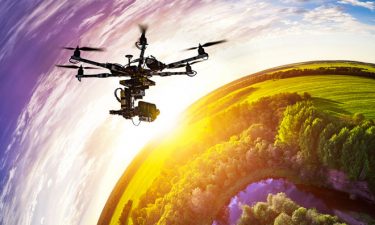

Uber has equally expressed aspirations through their white paper released a few months ago, on the feasibility of ultra-short-haul commercial flights in the urban space.
It’s predicting the rise of VTOL (Vertical Take-off and Landing) vehicles offering on-demand flights in urban areas leveraging existing infrastructure (e.g. parking rooftops) as vertiports (airports for aircraft that can take-off and land vertically). Some of the challenges mentioned in the paper include:
- Regulatory challenges
- Battery technology readiness
- Vehicle performance and efficiency
- Air Traffic Management
- Noise and Emissions
- Vertiport Infrastructure in cities
- Pilot training
3. Augmented Reality
Virtual Reality (VR) is often associated with glasses that take you to a virtual world where your actual real movements are translated to the virtual world. On the other hand, perhaps even more relevant, Augmented Reality (AR) is more likely to penetrate the airline and airport space (click here to learn the difference between VR and AR).
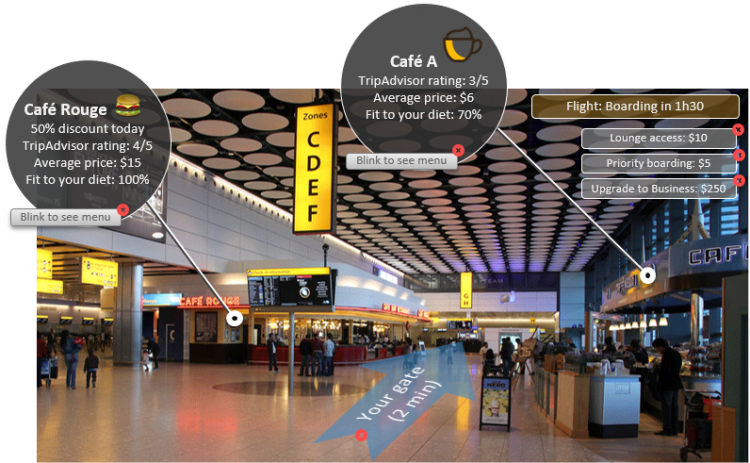

The above image shows a hypothetical AR view of a passenger, where the view is enhanced with information (sensory input, static and dynamic information sources, location, object and context awareness) and functionalities (e.g. buying lounge access by looking at the lounge access button at the top right corner of the view, and blinking twice, which would act as a click of a mouse).
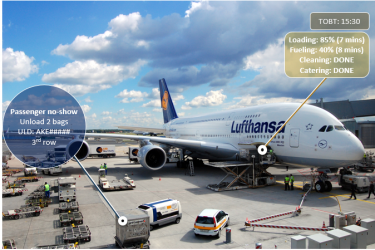

The same could be applied on the airport ramp to support ground operations through the use of the AR technology.
4. AI (Chatbots)


2017 is likely to be the year of dialogue around consolidated chatbot engines that could act as a single gateway for customers.
5. Airline New Distribution Capability
The airline distribution space is gradually making headway towards a more dynamic and nimble model where airlines are in control, travel agents empowered, and Global Distributions System provided with an opportunity to build new products and services. New Distribution Capability (NDC) industry program has been the driving force in the last couple of years making the necessary standards and guidance available to the industry.


6. Indoor positioning systems (Beacons technology)
For a long time it seemed impossible to accurately know the location of moving objects (e.g. people) inside buildings. Global Positioning Systems (GPS) aren’t fit for purpose for indoors as the satellite signals are often not strong enough, and the accuracy is not sufficient. With the rise of Beacons technology, airlines, and airports are very likely to start using this technology to provide better/customised services to passengers as they travel through the airport terminal.
Beacons make it possible for airports and airport vendors to know where people are and send them relevant, personalised information. The information might be a gate number, a baggage carousel, flight status, or even a passenger’s favourite coffee shop.” (International Airport Review)
The International Airport Summit is open for registration!
Date: 19 – 20 November 2025
Location: JW Marriott Hotel Berlin
At our flagship event of the year, we will dive into the future of airport operations, with expert-led sessions on passenger experience, innovative smart technologies, baggage handling, airside operations, data, security, and sustainability.
This is where global airport leaders come together to share insights, challenges, and real-world solutions.
Limited complimentary passes are available for eligible professionals – first come, first served!
Related topics
Augmented reality (AR)/ Virtual reality (VR), Cyber-security, Drones, Emissions, Information technology (IT), Maintenance, New technologies, Safety





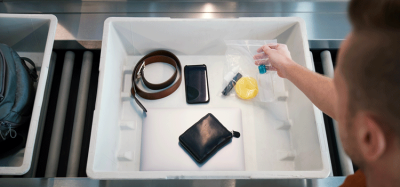
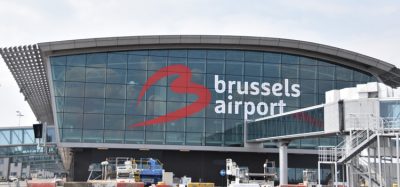
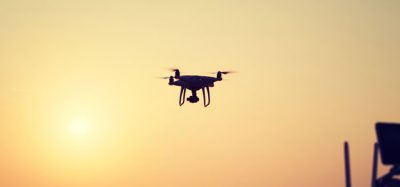











All information are high valuable thank you in advance.
Digital transformation is must every business in modern and high tech world. https://goo.gl/bsDYKu
“Businesses don’t transform by choice because it is expensive and risky. Businesses go through transformation when they have failed to evolve.”
In principle, Beacons technology is a good idea, but we need to be careful of privacy concerns and overloading of ‘advertising’. If one has too much information, the passenger will want to go to other airports with less technology. Technology must be seen as a partner and not a total solution otherwise the human being will become pointless!
What about ROGIDS impact on winter travel?
Can i use the blockchain technologie to send/receive aftn/amhs messages related to airtraffic services